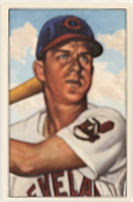He's a pop culture footnote today but back in the mid 1960's, Soupy Sales was the king of children's TV for a couple of fun-filled years. Following fifteen years of TV hosting experience that ran through Cincinnati, Detroit and Los Angeles, ol' Soup (born Milton Supman) eventually moved to New York when his LA show came off life support and in 1964 launched a new Soupy Sales Show on WNEW-TV (Channel 5 to us natives). This version lasted for two wacky and cream pie filled seasons and was syndicated nationally by 1965. On New Year’s Day 1965, quite unhappy that he had to work after what sounds like a typical New Year's Eve of the time, he instructed his audience to go into their mom's purses and dad's billfolds and send him “those little green pieces of paper.”
While the story has been conflated over the years to Soupy being summarily fired over this bit, it only resulted in his suspension from January 12-15, 1965. The Soupy Sales Show then resumed, presumably after airing a short spate of reruns, until the end of its syndicated and local runs on September 2, 1966.
Topps issued a set of 66 Soupy Sales cards in the midst of Soupy-mania. Pumped and dumped, these were standard sized, black and white affairs with a facsimile autograph of Soupy in blue ink. They are largely forgotten today and do not seem to have sold particularly well when issued and the cards may not have been marketed much beyond the Northeast.
For starters, the wrapper has no commodity code.
These codes began appearing on Topps wrappers and display boxes in early 1966, tied to Topps moving their manufacturing and packing plant to Duryea, Pennsylvania while their executives, business and creative staffs remained in Brooklyn at Bush Terminal. My determination that the set came out in 1965, which was the peak of Soupy-mania, is buoyed by this lack of a code. We'll revisit the set dating in a bit.
Color versions of a handful cards were produced, which are possibly unique and appear to be proofs made for internal use at Topps as they are blank backed. Who wouldn't want a shot of Soupy relaxing with a cigarette in his dressing room:
"My Dad and I went to see him at a Korvette's...and the throng was so great he got pushed through a plate glass window...the crowd pushed him against the window, which buckled and cracked and kind of folded outwards without fully breaking. So he didn't go completely through it, but at that point he, understandably, went home. As did we.")
Yikes!!
There is also a gray version. Here's the thing though, there is a facsimile card reverse on the other side of the wallet that still has Topps indicia:
As a neat tie-in the regular issue cards have a prominent “Wallet Size Photos” tagline on the wrappers and retail box lid. There is no checklist known for the paper issue and it's unclear if all 66 cards were reproduced this way.
The wallets were churned out by Standard Plastics, who made various things out of vinyl you may remember if you are of a certain age, such as die-cast car cases. A vinyl Soupy lunchbox was also produced along with a pencil case and what looks like a photo album or maybe a notebook:
Now check these out, clockwise from top left: wallets, pencil case, photo album (or notebook), lunchbox in a salesman's book page:
There was more though and in 1965 Topps produced a Fan Magazine of Soupy (the first of two issues for this short-lived publication) and a publisher called Wonder Books put out a series of books with Soupy stories, at least one of which was written by children of Topps executives Woody Gelman (his daughter Barbara, who was a magazine art editor) and Abram Shorin (Robert Shorin).
The Topps Fan Magazine has images of some of the cards reproduced within, which further nails the card sets as being from ’65. In addition, the retail box bottom uses the old “Brooklyn 32” address for Topps and not a ZIP Code (introduced mid-1963). The Topps pre-ZIP code address on their retail materials was not used on any post-1965 product and the wax wrapper drops the “32” so it would not surprise me if this is the last Topps box that used it.
I've covered the magazines before, you can click over for a look.
Soupy resurfaced a couple of times as a host of his own show on the tube after 1966 and was a steady guest panelist on game shows in the 60's and 70's. He was in a bunch of movies, had a radio show for a spell, cut some albums here and there and was one of those guys that was around show business seemingly forever. His two sons with his first wife Barbara Fox, Hunt (on bass) and Tony (on drums) became rock musicians and were in bands with David Bowie (as part of Tin Machine), Todd Rundgren (Runt) and Iggy Pop among others (if you ever heard that cruise ship commercial with "Lust For Life" they comprised the rhythm section). Soupy died in 2009 but his memory certainly lives on among some of us, although he seems like one of those performers who could be lost to time once we Baby Boomers turn the keys over to the kids.

































